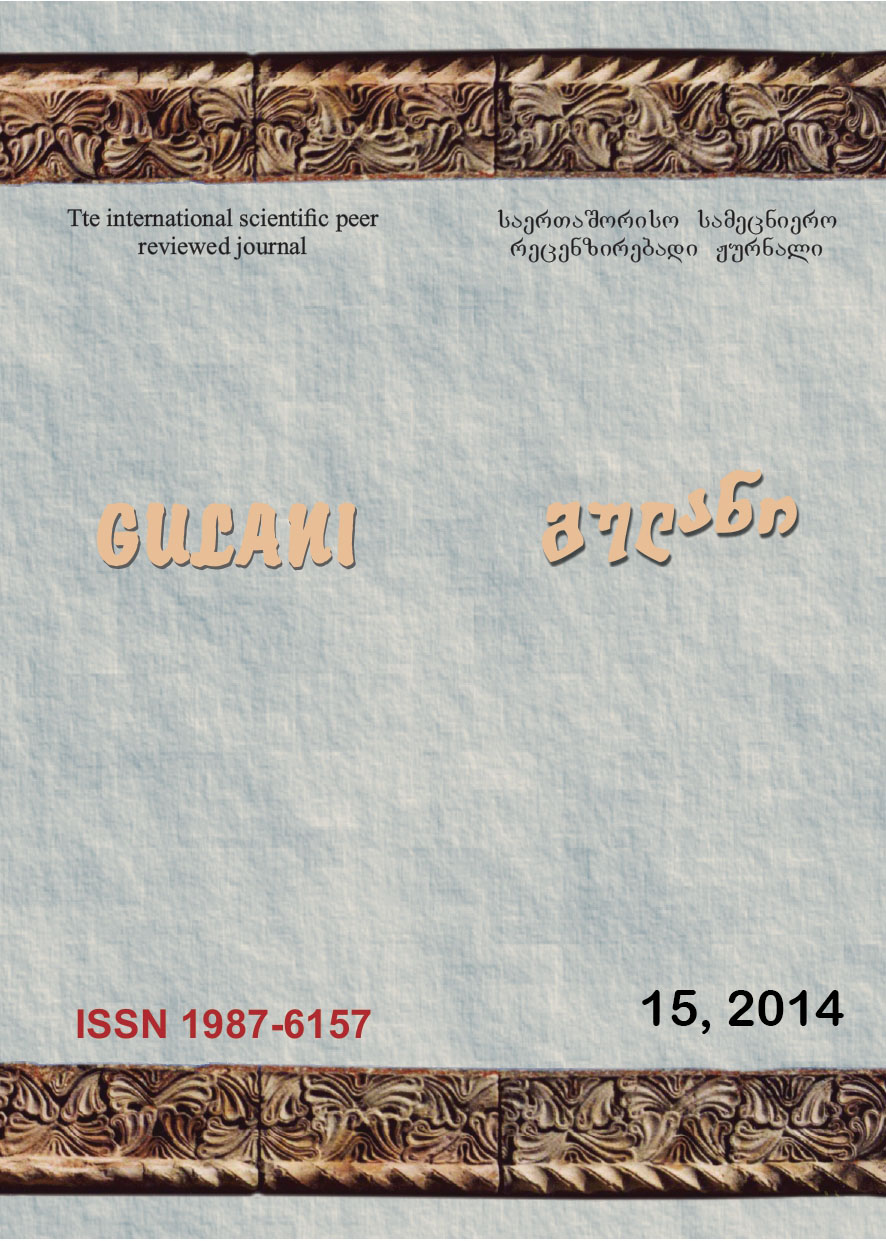RINGS OF LATE ANCIENT KVEMO GOSTIBE BURIALS
Main Article Content
Abstract
The topic of our researche is the rings of late ancient times found during the burials excavations in Kaspi municipal village Kve-mo Gostibe. After making analysis of the complex and comparing them with the similar kind of materials this archeological monument with its inven-tory burials was dated back the end of III - IV cc. A.D. Archeological materials found in burials are very rich and vari-ous. They represent the things mostly connected with clothes, jewe-lry and numismatics which on one hand are the things made on the basis of local cultural traditions with it‟s characteristic artificial style, shape and processing techniques (ceramics, openwork buckles, rings, necklaces, beads , cult and on the other hand , are Roman import (ear-cleaners, rings, earrings, bracelets, coins etc). 15 rings (one golden and 14 silver) were found in burials of Kvemo Gostibe. Their variety and specificity of shapes are very at-tractive. We came across two types of rings: one of the Roman types, the form of which is very characteristic to the Roman culture and was widely spread in the Kingdom of Kartli, and the other, completely different , with square shape, called “Iberian rings” by explorers. Pre-sumably they were made at the beginning of the IVc. A.D and can be found only in Georgia, mainly in ancient Iberia . The rings found in Gostibe enable us to observe the development of the Roman ring type formations in ( from I c. B.C up to IV c. A.D) in Georgian material culture and thereafter the process of Georgian ring formation process. Having released from the influence of Europe Georgian jewelry making became unique by it‟s features.
